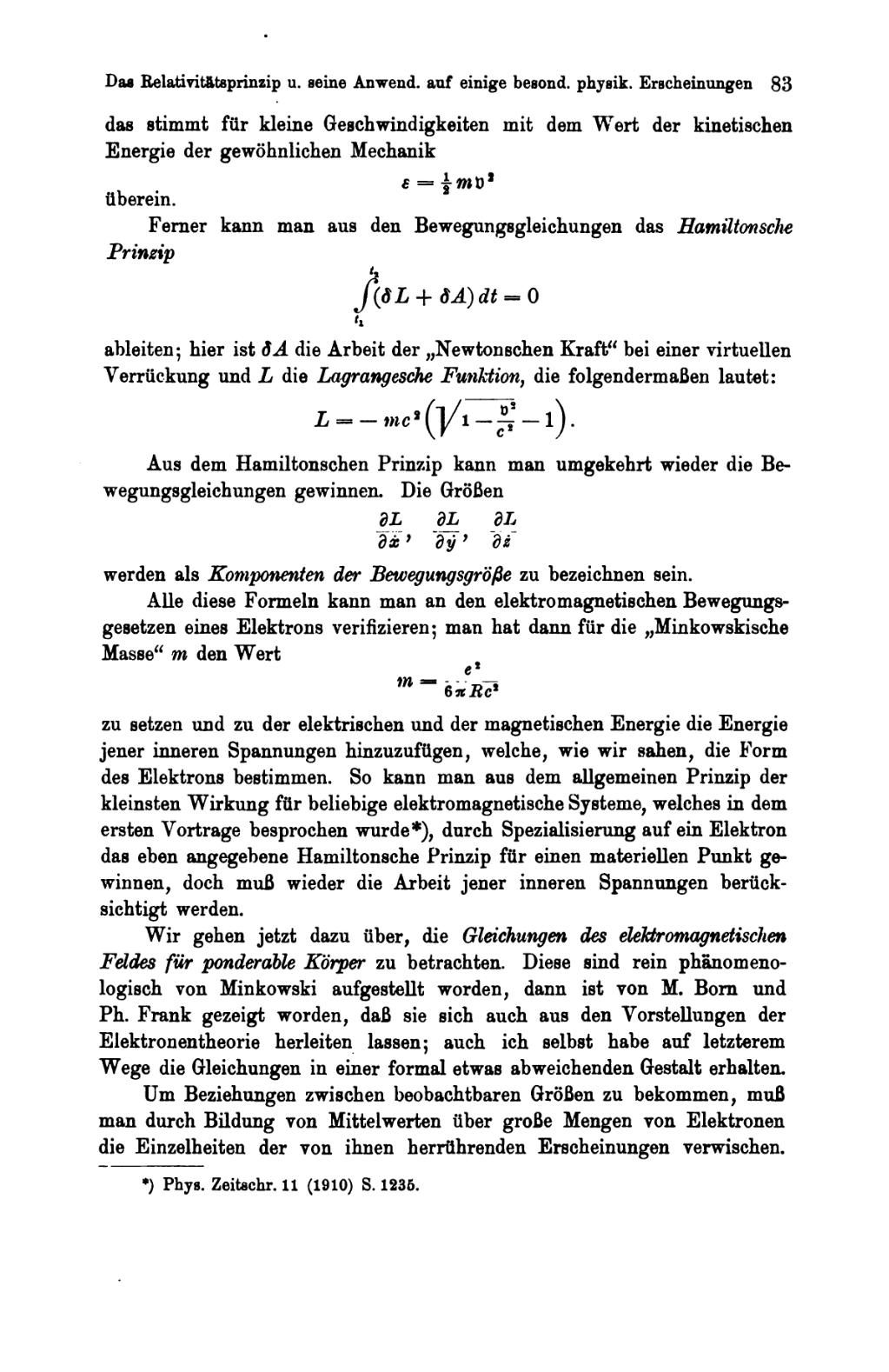which agrees for small velocities with the value of kinetic energy of ordinary mechanics
Furthermore, one can derive the Hamiltonian principle
from the equations of motion; here, is the work of "Newtonian force" at virtual displacement, and the Lagrangian function which reads as follows:
.
From Hamilton's principle, one conversely can derive the equations of motion again. The quantities
are to be denoted as components of momentum.
All of these formulas can be verified at the electromagnetic laws of motion of an electron; then one has to set the value for the "Minkowski mass"
,
and to add the energy of those inner stresses to the electric and magnetic energy, which (as we saw) determine the shape of the electron. By specializing on an electron, one can derive them from the general principle of least action for arbitrary electromagnetic systems, which was discussed in the first lecture[1], though the work of the inner stresses must be considered again.
Now we consider the equations of the electromagnetic field for ponderable bodies. Those are stated by Minkowski in a pure phenomenological way, and then it was shown by M. Born and Ph. Frank that they can be derived from the concepts of the theory of electron; I also have by myself obtained in the latter way the equations, whose shape is formally somewhat different.
In order to obtain the relation between observable magnitudes, one has to blur the details of the phenomena stemming from the electrons, by formation of averages over great quantities of electrons.
- ↑ Phys. Zeitschr. 11 (1910) p. 1235.








